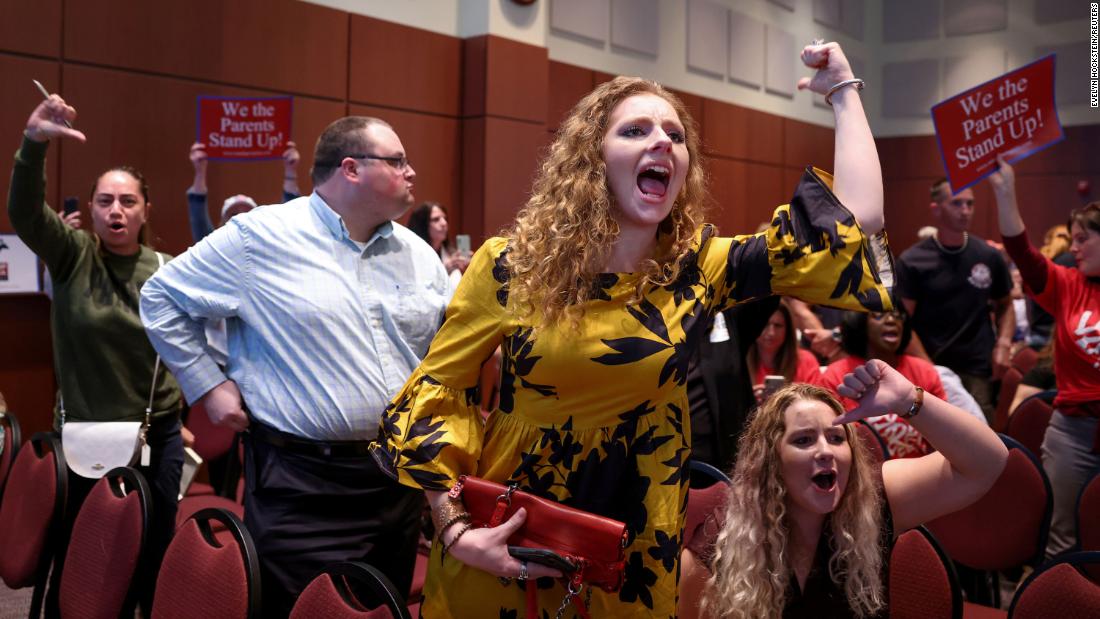School boards are under fire. What exactly do they do?
Last month, the National School Boards Association sent a letter to President Joe Biden asking for help looking into the threats and bullying.
“As these acts of malice, violence, and threats against public school officials have increased, the classification of these heinous actions could be the equivalent to a form of domestic terrorism and hate crimes,” the school boards association stated in the letter.
Here’s a look school boards and what they do to elicit such strong feelings.
Who sits on a school board?
Board members are usually elected officials. They are hairdressers or doctors or lawyers or store clerks — in most places, anyone can run for a seat on a school board who is at least 18 years old, is registered to vote in that district and has lived in that district for at least one year before the election.
People who work for the school district — teachers, administrators or other staff members — usually are not allowed to run.
Board members often are volunteers, though in large districts they may receive some compensation. The boards, ranging in size according to the district, typically meet once a month.
In some districts, cities have given control of the board over to the mayor, and the board is appointed, not elected, as a way to address poor school performance and other issues. Chicago and New York, for example, have appointed boards.
Elected school board members serve a set term of years, typically four. The seats are filled in staggered elections so that no board is replaced all at once in an election.
What function do school boards serve?
School boards are the governing body of the district they serve. They handle the nitty gritty, things like setting the budget, the curriculum, policies on discipline and safety — including mask requirements — the district’s school boundaries, its calendar and even bus routes. They hire and evaluate the superintendent.
But the board is also in charge of the big picture. They set goals and monitor schools’ performance and educational quality.
Arguments over education and cultural issues are nothing new, said Daniel Domenech, executive director of the American Association of School Administrators, recalling debates on how math is taught and the Common Core. But this year is different.
“There have always been disagreements that were discussed, if not necessarily amicably, at least respectfully,” Domenech said. “The climate is very different now, what we’re seeing around the country. School board meetings that actually turned violent, where the police have to be called, people that are disrespectful, they’re shouting and shoving.”
“It’s something that we have not seen on a scale that we are seeing it now,” he said.
Jason Amos, a spokesman for the National School Boards Association, declined to speak with CNN for this article.
School board and politics
School boards, “the most local of all local forms of American governance,” as Education Week wrote, are nonpartisan, and election ballots often don’t identify candidates’ political affiliation.
And board meetings “have turned into ground zero of the nation’s political and cultural debates,” Education Week noted.
“That’s part of the problem as well, that you add politics to a discussion of these issues, and it just doesn’t seem to be any willingness on one side or the other to reach common ground and to understand and to work together,” Domenech said.
“We’ve started our candidate academy to provide parents with the tools to win elections in their district and protect parents’ rights — whether that means combating mask mandates, lockdowns, or critical race theory. This training provides parents with information about everything from what a school board does to how you can impact the school board once you’re elected,” the website says.
Longtime school board members are throwing in the towel
The divisiveness, the threats and the harassment are “having a detrimental effect on staff,” who are leaving the profession in numbers he’s never seen, said Domenech, who has served in various roles in education for 54 years.
“We have board members that have served for years and decided that they don’t want to bother with this anymore,” he said, and teachers, principals and superintendents are also throwing in the towel.
“I can tell you that as the organization that represents our school superintendents, I’ve never seen the number of superintendents leaving the professional scene now because of the stress and the issues of being threatened, of being abused,” he said. “Their families are being threatened and abused.”
![]()


